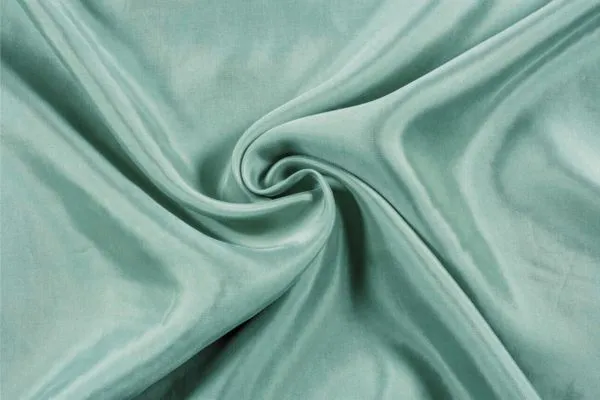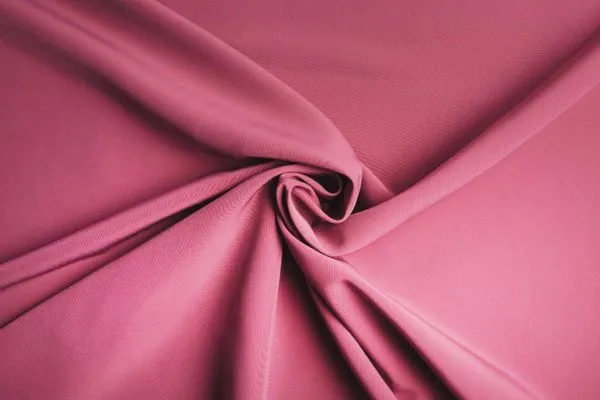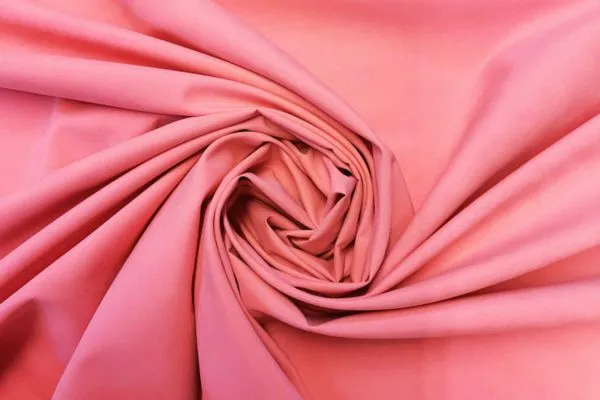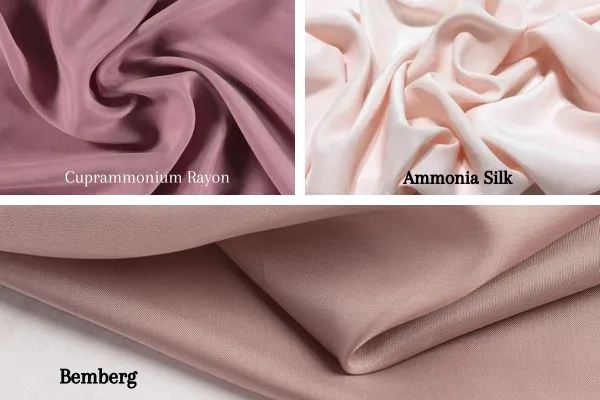Imagine a fabric as soft as silk that also lets your skin breathe. It’s elegant and comfy, making it more than just clothing—it’s an experience. Cupro blends luxury with practicality seamlessly. Cupro is often known as “copper silk” or “ammonia silk.”

Beyond its fabric classification, Cupro stands out like Modal or Lyocell but has charm. Explore this refined textile that not only looks exquisite but feels delightful. It offers a harmonious blend of opulence and ease. We invite you to dive into this article to learn more about Cupro fabric, which is worth reading.
Table of Contents
What is Cupro Fabric?
Cupro fabric refers to the regenerated cellulose fiber that is made from cotton waste. The source material has another name to recall: cotton linter. Cotton linter is a small and silky cotton fiber that is too small to spin. Apart from that, Cupro fabric is a plant-based, chemically processed material.

Cupro fabric is silky and smooth. It drapes well, similar to any luxurious material. Besides, Cupro has an excellent reputation as a super high-quality rayon. Its super tiny fibers are super smooth with no marks or lines on the surface. Mix it with cotton, and you can get a cool textured look called a slub finish.
The Origin of Cupro Fabric
Cupro fabric first appeared in the late 19th century. It came into life due to an intelligent reuse of a cotton byproduct. Innovators used cellulose, which is similar to cotton. Later, it went through precise processing to create a unique textile. Cupro is noted for its extraordinary softness and subtle sparkle. Cupro’s growth, which began as a byproduct of cotton refining, generated a new generation of luxurious fabrics.

Its transformation from a byproduct to a sought-after material signifies its importance in the textile field. Because it provides a superb balance of comfort and elegance, this shift in fabric production highlighted the ability to transform surplus into extravagance. It can also reshape the landscape of textile handicrafts.
What is cupro fabric made of?
Cupro fabric is made of regenerated cellulose fibers obtained from cotton linter. It is a cotton industrial waste. The treatment of these cellulose fibers in a solution results in a yarn that is woven into fabric. It’s a type of rayon recognized for its silky feel and breathability.

Cupro is not a fully synthetic fiber. Instead, it is also a hardly natural fiber. Cupro is rather a semi-synthetic fiber as it gets exposed to ammonia and other caustic soda. After being exposed to it, its chemical structure gets changed and cupro becomes another example of Chinese rayon.
How Is Cupro Made?
Cupro fabric is made in 4 stages. They are
Stage 1: Exposure
A Cuprammonium rayon is prepared by exposing the plant product cellulose. It then gets into a mixture of ammonium and copper.
Stage 2: Combine
Ammonium and copper combine with the cellulose to make a new substance.
Stage 3: Dropping
In this stage, the mixture gets dropped into caustic soda. Then, the mixture is released via a spinneret (an extrusion device).
Stage 4: Reconstruction
The long threads are immersed in baths to strengthen them and remove impurities like ammonia, copper, and caustic soda. These baths are sometimes reused but must eventually be disposed of properly.
Different Types of Cupro Fabric
Although the names of the types are different, they function the same under the umbrella of Cupro fabric. The different types are:
- Cuprammonium Rayon: It is the scientific name for cupra, cupro, and ammonia silk.
- Ammonia Silk: Cuprammonium Rayon has another name to refer to. That is ammonia silk.
- Bemberg: Bemberg is derived from the company named J.P. Bemberg. It is another name for cuprammonium rayon.

Benefits of Cupro Fabric
Cupro is a one-of-a-kind fabric for its benefits. For instance:
- It reduces waste by-products from the production of cotton.
- It is biodegradable and has no harmful impact on the environment.
- It is a chilled, light, and breathable fabric.
- The fabric does not cause any allergic reaction.
Cupro Vs. Silk
Cupro’s silk-like drape and delicate touch make it an attractive choice for those looking for a silk-like experience with enhanced robustness and practicality.

| The topic of the Difference | Cupro Fabric | Silk |
| Derives From | Cotton Linter | silkworm cocoons. It makes the silk more sustainable. |
| Smoothness and Gloss | Present | Present |
| Breathability | Breathable | Breathable |
| Durability | High | Low compared to Cupro |
| Prone to Wrinkling | Less | High |
The Environmental Impact of Cupro Fabric
Cupro is made from regenerated cellulose. Hence, it has environmental advantages due to its usage of cotton waste. However, the manufacturing of Cupro requires chemicals and water. It may raise environmental concerns. Cupro’s ecological footprint is being reduced through efforts such as recycling process byproducts and lowering water and chemical use.
FAQs
Is Cupro fabric a sustainable material?
Cupro is not sustainable in an overall sense. However, it is fairly sustainable when the raw material is cotton. Cotton reduces waste, and that is what makes Cupro biodegradable. It breaks down naturally, and the overall production process is entirely of sustainable credentials.
Is Cupro fabric expensive?
Cupro fabric is not expensive at all. Instead, the most significant benefit of having Cupro fabric is its low cost. It is also an affordable alternative compared to silk.
Is Cupro a good fabric?
Cupro is a good fabric. It is known for its luxurious feel. It is identical to silk as well. But Cupro is easy to care for, breathable, and durable. It drapes elegantly and is more affordable.
Is Cupro breathable?
Cupro fabric is very breathable. It allows air to pass through easily. Because of its breathability, Cupro fabric is comfortable to wear in different climates.
Is Cupro fabric stretchable?
Cupro fabric is stretchy but at a moderate level. If Cupro fabric is mixed with other materials, it varies significantly in terms of stretchability.
What is Cupro Viscose fabric?
Cupro viscose fabric is a combination of cupro and viscose. Both fabrics come from cellulosic fibers derived from plants. Viscose fabric especially comes from regenerative trees, for instance, bamboo, beeches, and others.
Is Cupro natural or synthetic?
As cupro fabric mainly relies on cotton linter, it may seem natural. However, Cupro fabric goes through a synthetic production process. In this process, Cupro gets treated with chemicals. Hence, Cupro is a semi-synthetic material.
What is Cupro yarn?
Cupro yarn is made from cuprammonium rayon. It is also derived from cotton linter.
Conclusion
To conclude, Cupro fabric is similar to fine silk but harder. It’s soft and smooth. Hence, garments manufactured from this fabric are comfortable. It is ideal for all weather conditions because it breathes and keeps you dry. It can be washed in the same manner as conventional clothing.
Moreover, Cupro is environmentally friendly. It is made from recycled cotton scraps and quickly returns to nature. Even though it’s fancy, it’s affordable, making it ideal for suitable outfits that don’t break the bank. As a result, it’s like silk’s cool, low-maintenance cousin—luxurious, practical, and eco-friendly all in one fabric.
